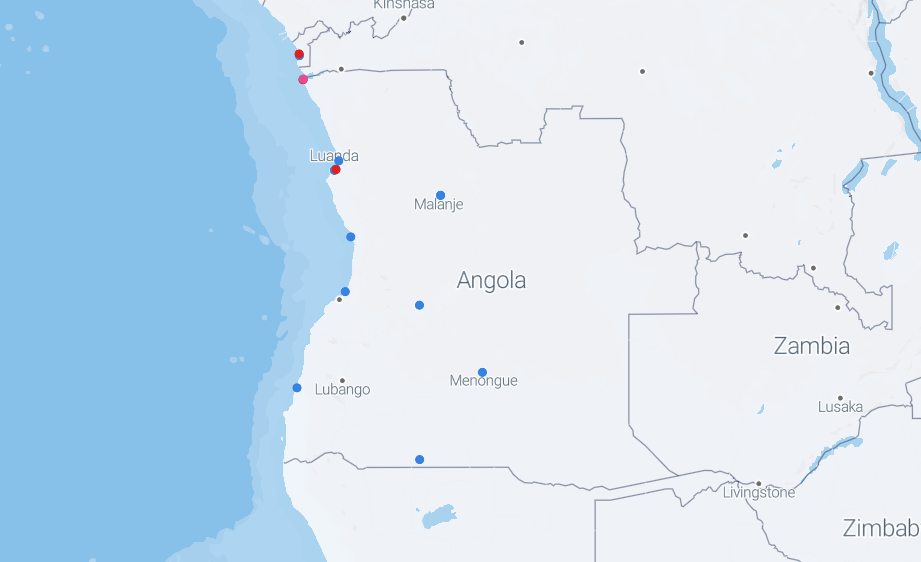
Port Infrastructure in Angola will Allow the Country to Capitalize on its Resource Wealth
While the socioeconomic development of the Republic of Angola continues on an upwards trajectory, and its maritime cargo volumes increase, the long-term potential for the development of the country’s port infrastructure has been a priority for the government since the finalization of the 2018-2022 National Development Plan and is key to driving the country’s lucrative oil and gas industry.
With a 1,600 km coastline along the Atlantic Ocean, the Republic of Angola currently has five operational seaports, providing a clear maritime transport network and serving as an important regional transportation hub through which the country may facilitate the movement of goods to and from international markets. Angola’s five operational ports are its Luanda, Cabinda, Lobito, Soyo, and Namibe Ports, with plans currently underway to introduce its sixth seaport, the Barra do Dande Port, 50 km north of Luanda. The government of Angola has aims of developing this new port as an international one to alleviate strain on the Port of Luanda, which has faced years of encumberment.
The deep-water Port of Barro do Dande, located in the Bengo Province, will be developed in phases through public-private partnerships with Angola’s national oil company, Sonangol, and will feature the construction and installation of 29 storage tanks, terminals for solid and liquid bulk materials, as well as a container terminal, multi-use terminal, and petroleum support zone. Additionally, the project will see the construction of an 18.25 km quay wall, an embarkment area of 10.5 km2, and a logistics support zone of 4.68 km2. With engineering preparations having already been completed, the total cost of the port development is $1.5 billion.
“The idea is necessarily to ensure that Angola does in fact take advantage of its technical position at the maritime port level and that we do manage to take advantage of this wealth that is at our disposal,” stated Angola’s Minister of Transport, H.E. Ricardo Viegas D’Abreu, highlighting the strategic considerations of the Luanda Port hub at a national level.
Handling over 70 % of the country’s international imports, and 80 % of its non-petroleum foreign trade, the Port of Luanda serves as the Republic of Angola’s largest port and is the main import and export terminal for long-haul, maritime cargo. The port is administered by the country’s state-owned Empresa Portuária de Luanda, with global supply chains solutions company, DP World having been awarded a 20-year concession to manage and operate the facility. The company has since invested $190 million to transform the terminal into a regional maritime hub.
“With this partnership, it will be possible to promote and boost Angola’s industrial development, as well as its cross-border and international trade,” stated H.E. Minister D’Abreu.
Group Chairman and CEO of DP World, Sultan Ahmed Bin Sulayem, added that, “alongside this Multipurpose Terminal, there is still tremendous opportunity to further develop and integrate the country’s logistics and trade infrastructure and unlock more economic benefits. The Angolan government has an ambitious plan for this sector, and through this MoU, our primary objective is to find ways in which we can support the country to significantly maximize its strategic location and increase trade flows domestically and in the surrounding region.”
Meanwhile, Angola’s Lobito Port is the second largest in the country, and is strategically connected to the Benguela railway network, linking the southern African country to the Democratic Republic of the Congo, with plans currently underway to extend the network into Zambia. Providing services primarily to facilitate the country’s oil and gas industry, the Cabinda Port is located in Angola’s oil-rich northwestern province of Cabinda, while the country’s southernmost Port of Namibe focuses primarily on fishing activities in the region.
It has been highlighted by the government of Angola that in order for the country to become more self-sufficient, it will be imperative for Angola to begin producing more refined materials for itself and for the foreign market. Under its National Development Plan, the government has sought to promote infrastructure development through the expansion of its seaports and optimizing the role that local companies play in their development. Despite Angola’s construction sector accounting for over 15.5 % of its GDP, the sector remains dominated by Chinese, Brazilian, and Portuguese companies.
Serving as a key bulk infrastructure asset for both economic and social gains of Angola, development of the country’s port infrastructure will be imperative for attracting international investment and driving the country’s oil and gas sector, which accounts for approximately 50% of GDP and roughly 90% of exports.
EnergyCapital&Power by Matthew Goosen, March 15, 2022
